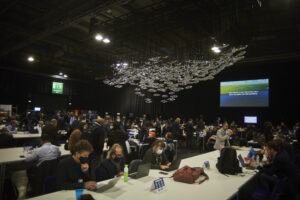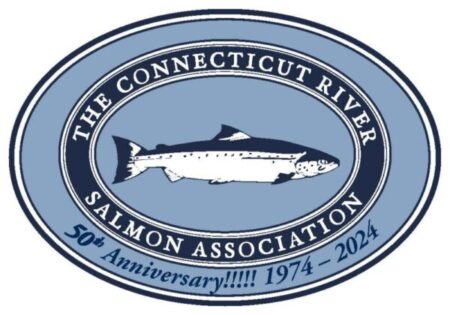Salmon School at COP26
Salmon School at COP26
VIDEOS from Salmon School:
Why is Salmon School at COP26?
- If all is well with salmon, all is well with the world. Saving salmon, restoring their habitats and ensuring they have cold, clean water, will take action across all four objectives of COP26. And so salmon embody all the issues faced in the climate and biodiversity crises. We need firm action from government, businesses and society and major investment from both government and the private sector to help save wild salmon, their freshwater and ocean habitats and the benefits they bring to us all.
- Salmon holds great importance to Glasgow. The city was formed by settlers attracted to the salmon stocks and has three salmon on its coat of arms. The salmon population was decimated in the Industrial Revolution and has been restored by local Glaswegian communities including the Clyde River Foundation – a story of hope.
- An international collaboration has come together to bring Salmon School to COP26. It highlights stories from a wide range of global communities on how climate change is decimating this once prolific species.
- Salmon School highlights both the crises of climate change and biodiversity loss.
- To provoke policy changes for cold, clean water.
 What is the significance of the art?
What is the significance of the art?
- 350 hand-blown mirrored glass salmon forms
- The act of coordinating making the sculpture has brought together NGOs from around the world concerned with community science, art, education, conservation and Indigenous Peoples
- The artwork will return to the Tacoma Museum of Glass in autumn 2022, mirroring a salmon’s life cycle
- The work of art is not just an impressive spectacle, it also has a strong conceptual significance
- The metaphor of the mirror runs through the piece.
What are we asking governments and policy makers to do?
- protect freshwater habitats, such as addressing barriers to migration and providing cooling shade from native trees;
- improve water quantity and quality, such as stopping pollution from agricultural run-off and sewage, and tackling over-abstraction and better management of river flows;
- reduce losses of salmon in our rivers, coastal waters, and the open ocean, such as addressing the impacts of aquaculture, predation, and by-catch.
- provide the right level of funding, both directly and via private investment, to secure the future of wild salmon.
What is the sustainability message around the glass?
- We have engaged with BEZERO https://bezerocarbon.com/and they are currently carrying out a carbon audit and we will then be offsetting using a salmon river and are looking to enter a longer term relationship with BEZERO.
- In addition, 2022 is the UN Year of Glass as a sustainable material and is being celebrated. Salmon School is likely to be part of this celebration. Glass has been around for 1,000s of years and is viewed as sustainable.
How does Salmon School directly address the four goals of COP26?
- Carbon Net Zero – Cold, clean water is critical for wild salmon survival and is vanishing due to rising global temperatures, pollution, deforestation and damming – all caused by humans.
- Adapt to protect communities and natural habitat. Salmon communities have identified that large scale adaption measures are needed to help the survival of the species and themselves.
- Finance – Significant investment is needed and the financial model needs to change to ensure funding and investment is not destroying the very environments salmon and humans need to survive.
- Working together – The international organisations are collaborating for the first time to save our wild salmon.
Which organisations are involved in bringing Salmon School to COP26
- MSA
- Wild Salmon Center
- Atlantic Salmon Federation
- Salmon Nation
- Smithsonian Institution, Washington DC
- Joseph Rossano’s Salmon School
VIDEOS from Salmon School:
